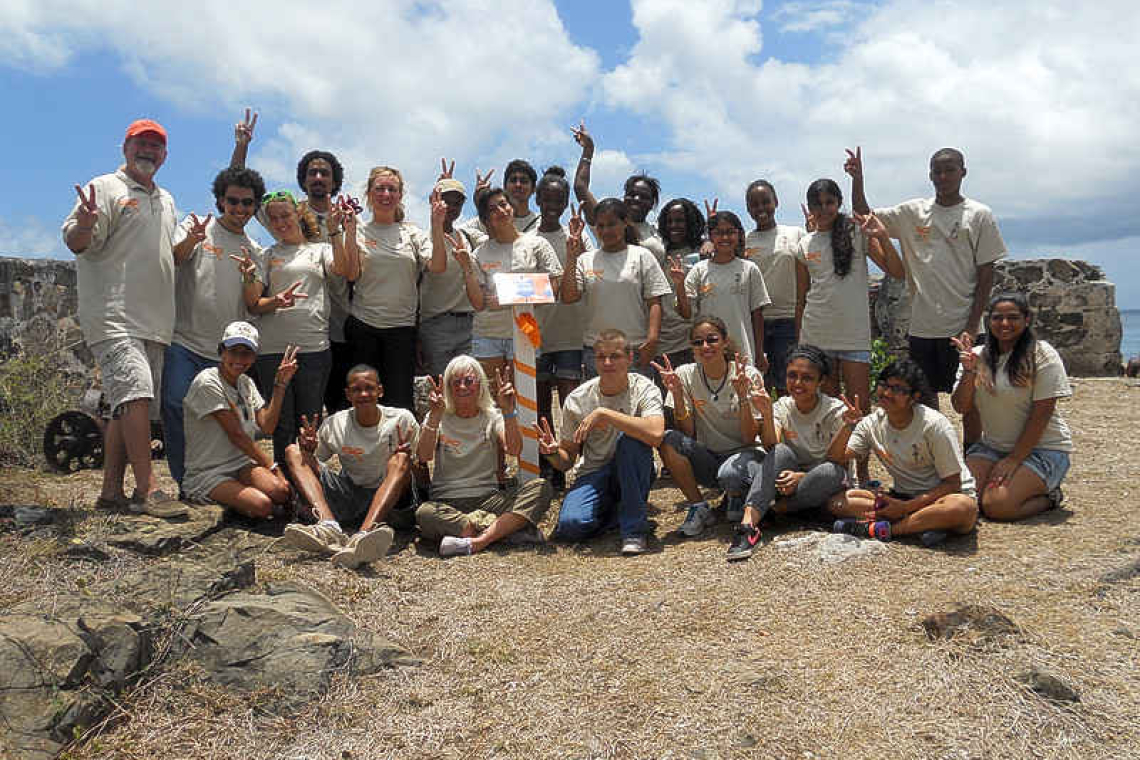Much has been built from the ground up since the St. Maarten Archaeological Center SIMARC was established in 2005. The non-profit foundation has trained scores of students, instilling in them the skills to uncover and explore our history, and more importantly, understand and preserve it. Founder and director, Dr. Jay Haviser, can reflect on SIMARC’s many highlights and achievements over the years, including the excavation of the “Zoutsteeg Three”, the skeletal remains of first-generation enslaved Africans whose teeth and bones revealed part of their stories – details discoverable only through archaeology. However, he was equally proud, if not more so, of fostering cultural curiosity and scientific skill in the youth, during an interview with “The Weekender”.
“If we do not make heritage relevant to the young people of today, it will disappear. I’m hoping to instil a deeper value and appreciation of heritage and the appropriate research of heritage. Anyone can tell a good story about history, but with archaeology, you’re acquiring empirical evidence of that story.” Discussions on the past and current affairs were always encouraged, with the goal of real, nuanced understanding, and so that this awareness would be kept for later in life when students enter the workforce, regardless of their specific professions. Many former students have indeed gone on to study and work in scientific fields.
The project actually started in Bonaire in 2003, when Dr. Haviser had been working as an official archaeologist for the central government of the then Netherlands Antilles. He approached a minister with the idea of focussing heritage and science research on the youth. With that, the BONAI youth programme was born. Following its success, the St. Maarten government soon after requested that a similar programme be set up in St. Maarten, and so SIMARC was established. Years later, Dr. Haviser would go on to establish a third organisation on Saba called SABARC.
Students have carried out fieldwork and joined meetings locally, among these islands, and in the broader region with Dr. Haviser – who is also President of the International Association for Caribbean Archaeology. Some presented research at conferences, a few even having it published. With this comes a wealth of knowledge, understanding, professional exposure, networking opportunities.
SIMARC’s first Board of Directors comprised Ellinger Paul, Elsje Bosch, and Andre Patrick. Over the years the board has changed, with today’s members counting Ellinger Paul, Jodi Garner and Amanda Ferrier. The first assistant was Anita Boer, a school teacher, followed by Chris Velasquez, Amanda Ferrier, and Kess Lusia, who had been students. Work started as soon as a location was secured – a laboratory and room for meetings in Madame Estate.
One of the biggest blows to SIMARC was when its office was destroyed during Hurricane Irma in 2017. It is now located in a tight space on Welgelegen Road, and will hopefully be able to move into a dedicated heritage centre, along with the St. Maarten Archives and St. Maarten Museum, in the future. This would be an incredible step in promoting culture in the public sphere. Plans have been in the works for years, to this end. While the efforts of many heritage based NGOs are palpable, they ultimately need outside backing and support, especially from government.
Some of SIMARC’s first projects on St. Maarten included documentation of various historical sites, excavation work at the historical Emilio Wilson Estate, and an inventory of large trees across the country. Over the years, they have also identified, preserved and repaired monuments. In late 2016/early 2017 for example, SIMARC along with partners, repaired Fort Amsterdam’s main bastion and cannons. Had the damaged main bastion not been repaired, it would not have been able to withstand Hurricane Irma, which struck the same year.
The large tree project has been an important one, and is now being extended in collaboration with the Nature Foundation. Trees, as he elucidated, are important in archaeology, because they are “right at that vital overlap between man and nature”. “The majority of our largest heritage trees are all imported. Culture brought them, and they became part of culture. Big trees become landmarks; they’re places where people gather, where lovers meet, they provide fruit and wood and shade and oxygen, and soil erosion protection.” It was SIMARC that successfully proposed our local National Day of Trees, observed on March 22. The organisation notably had a tree exchange with The Netherlands, resulting in a guavaberry tree from St. Maarten being housed to this day in the Hortus Botanicus Amsterdam.
In its 20th year, SIMARC was able to represent what are arguably its most important findings to date, on the Kingdom stage – an exhibition about archaeology in the Dutch Kingdom, at the Rijksmuseum van Oudheden in Leiden. Ironically, up until this year, the islands were not included in this annual exhibition. All of the Dutch Caribbean islands are presenting archaeological glimpses of their history, in the still-ongoing exhibition. SIMARC is presenting the Zoutsteeg Three, through photos of their teeth, an explanation of their genetics, and physical artefacts that were found with them.
Chanced upon in 2010 by construction workers during road works in the middle of town (Zoutsteeg), the three skeletal remains uncovered noticeably had sharpened teeth, a direct and tangible connection to their homelands. They were found to be enslaved Africans from the 1600s, from the first generation brought to the island. Through both DNA testing, and more modern whole-genome capture and next-generation sequencing, by the University of Copenhagen and Stanford University, their homelands, down to the region, were narrowed down. It was named by Archeology Magazine as one of the top ten discoveries (worldwide) of 2015. SIMARC is working on plans to repatriate the remains to their countries of origin: Ghana, Nigeria, and Cameroon.







